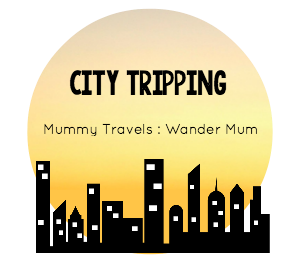If you are planning on visiting a new city, whether on business or for leisure one of the major considerations is how to get around. There are many things to consider with this including the ease of the form of transport, the time it takes and the cost. Let's have a look at how to plan your journey in a new city.
Overview
To gain an overview of the transport in a city there are certain places I would look - the official tourist information website for a city, a tourist guide book like Lonely Planet guides or DK Eyewitness guides, blogs and YouTube channels. I find the official tourist websites are generally pretty good, I also find YouTube a great source of up to date information as well as blogs. Guidebooks aren't generally printed that often so can be out of date.
Maps
It's always useful to have a map when getting around a city. You could go old school and get a paper map, these are often included in city guide books or you can find them in bookstores, or use Google Maps on your phone to help you get around. Don't forget to download your trip with Wi-Fi, so you can view it offline if you don't have unlimited roaming data.
Walking
Walking is the cheapest form of transport and many small cities are walkable if you are relatively fit. A walking tour is a good way to see a city if you are new to it. These can be booked online or in tourist information offices for a small fee. It's a great way to get your bearings when you are new to a city. Larger cities however like London and New York are virtually impossible to walk so you will need to use public transport or drive.
Driving
Hiring a car or using your own car to drive in a city is an option you could consider. There are two main issues with this. Firstly parking may be expensive. Secondly, it can be slow to get around a big city by car. You do have the convenience of having a car however so you may not mind paying for this. Recently I have found that using a site like Just Park can save money on parking in city centres. You can get cheap parking in hotels and even people's driveways at a fraction of the normal cost.
Taxis
Taxis can be a way to get around a city you are unfamiliar with. Booking a taxi through a site such as Uber or Bolt in a city like Barcelona will often mean it is cheaper than the local taxis, but check for surge pricing which means it's a busy time and the price may be extra. Unfortunately in some countries, local taxi drivers have a bad reputation especially for overcharging, however in some big cities like London and New York the local taxis are excellent. Do some research on the taxi situation before you go. As a woman using a site such as Uber means you can see the driver's photo and name before they pick you up and you can track your journey as they go. This is reassuring if you are a woman on your own.
Public transport
Buses, trams, trains and the metro or underground subway are all viable ways of getting around a city easily. In a big city, if they have an underground subway it's often reasonably priced and quick to go vast distances. Buses and trams are generally cheap but slower than taking an underground train. Trains are great to get from one side of the city to another quickly but can be more expensive than other forms of public transport.
Boats and planes
If a city is near water you could possibly get there by boat as well. Venice for example is surrounded by water, and the easiest way of getting into the centre of the city is by water taxi. You can share one which is cheaper than the private ones which are very expensive. Of course, if you are coming from a distance, then flying is the quickest option but may be expensive. Compare the low-cost carriers to see if any fly into the city you are going to. In the UK, Wizz Ait, Ryanair and Easyjet are three low-cost carriers that are reasonably priced although customer service can vary. Personally, I try to avoid Ryanair when I can for various reasons I won't go into here!
Bikes and scooters
If you like riding a bike then you could consider hiring a bike to get around a city. Or another option is an Ebike or scooter. These options are usually very cost-effective and can be very convenient. Some cities even have easy to rent bikes via public hire schemes where you pay as you ride per hour. Don't forget though you if you rent a bike or scooter from a traditional office they will have helmets but if you rent one from a public hire scheme where you do it with a credit card or app on the side of the road you will have to bring your own helmet. You could of course bring your own bike with you on holiday.
Utilise an app
Most of us have smartphones these days, so one way of planning your trip to a city and around it is by using a website or app like Omio. It can give you almost all your travel options in one place and includes trains, planes and bus options. You put in your destination and you can sort the results via cost or arrival time, saving you time.
*Collaborative post




































